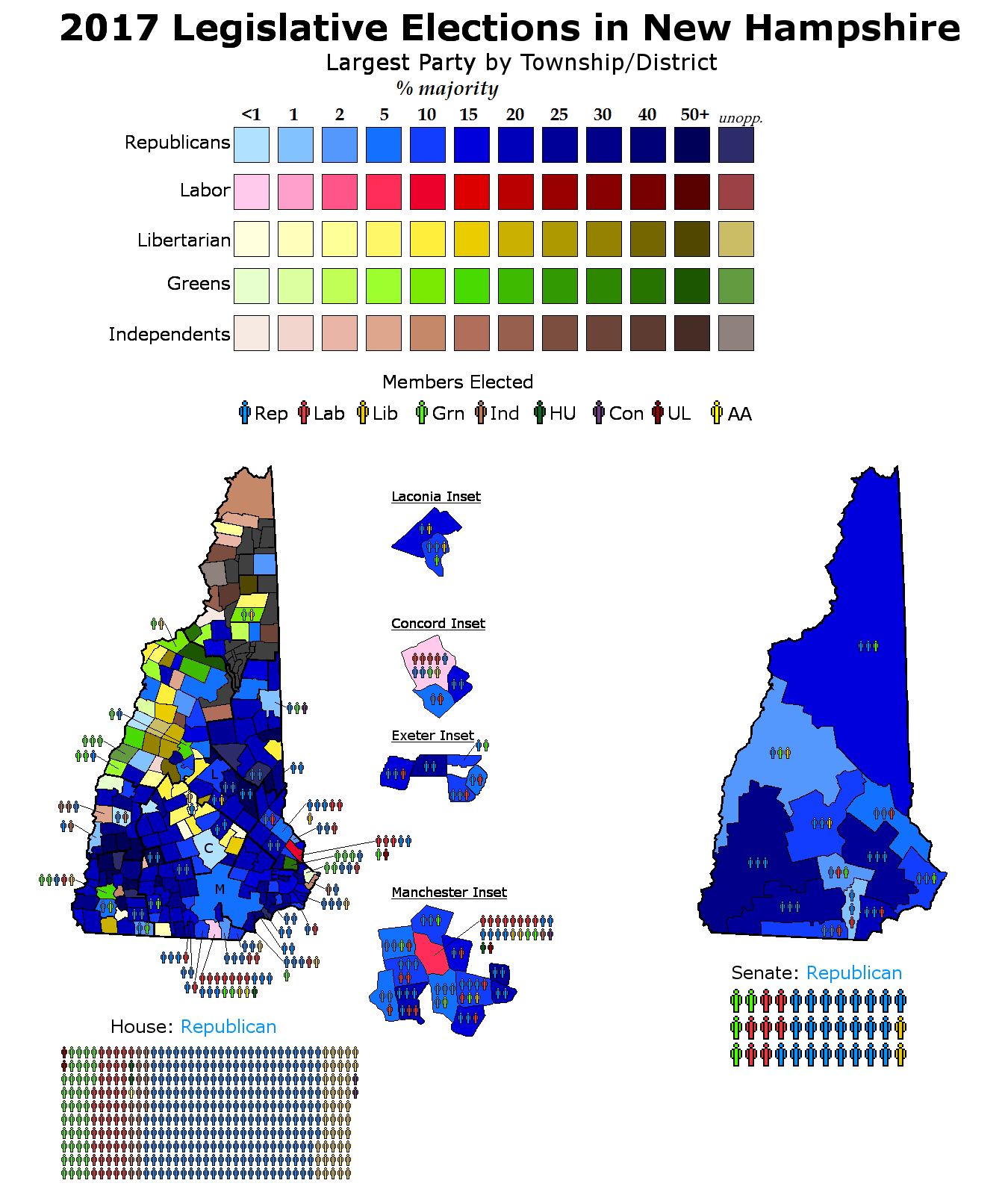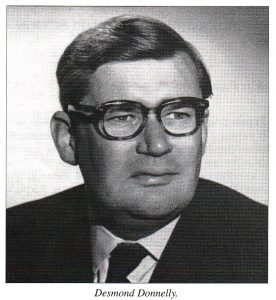This is the eighteenth installment in my alternate American election series.
Previous states:
Metropotamia
Alta California
North Carolina
New Jersey
Adams
Alabama
Rhode Island
Sequoyah
Assenisipia
East Florida
Tennessee
Kansas
Dakota
Arizona
Delaware
Oregon
Ozark
New Hampshire is a Republican stronghold of a Republican stronghold, being the most Republican state in New England by far. With the Republican party always gaining at least 50% of the vote since 1972 Labor has struggled to get even a half of their vote size and has never been in government. Even during the National Union era the state only became National Unionist once in 1944, as a show of unity for America's entry into World War III.
However the most interesting part of New Hampshire is it's arcane lower legislature. Massive in size with 394 representatives it is by far the largest legislature of any state in the Union. While still technically following the rules outlined in the 32nd Amendment, aka the Great Reform Amendment, the House's boundaries were almost successfully challenged in the Supreme Court until the argument of the townships possessing "great historical significance" was brought up. Thus to this day New Hampshire has one of the least representative legislatures of all the 61 states, a point which many Labor supporters point to as a shining example of the Grand Old Party's corruption. But this argument is quickly shot down when Republicans bring up the corrupt nature of Western Connecticut having trade union bosses as senators.
The state's upper chamber on the other hand is rather small, with only 36 senators, but with it's districts being rather gerrymandered the Republican majority is often even more pronounced than in the House.
In the election of 2011 Labor swept across the state in a wave similar to the wave that crossed the whole country in 2010, however still left Labor with less than a hundred seats at 93, simply forcing the Republicans to ally with a couple of independents to keep their majority. In subsequent elections Labor's vote share has dropped dramatically, which coupled with the rise of the Green and Libertarian parties has left the three parties at a near 3 way tie in the election of 2017. Despite this, the Republicans has remained as dominant as ever in the Granite State and they are unlike to have to be forced into coalition again anytime soon.
Government:
Republicans - The party of the Big Business and fiscal responsibility, they have been dominant in the state of New Hampshire since the party's creation. While not as right wing as the Western Republicans they are the most right wing of New England Republicans owing to their lack of any serious opposition.
Opposition:
Labor - A mere token force in a white and rural state like New Hampshire the party has been in severe decline ever since their high water mark of 2011. With the Green party set to overtake them by 2020 the national Labor establishment has begun to enter talks with the national Green party to see if a non-competition agreement can be reached in New Hampshire, though optimism is low knowing how the Greens refuse to join the current Labor-Progressive-Populist pact.
Libertarians - A right-wing version of the Republicans, their dedication to the utter elimination of the already low income taxes of the state has lead to a rise in their popularity among isolated and rich towns across New Hampshire.
Greens - A left wing party with a heavy focus on the environment, they have gained popularity among both college aged youth and ecologically minded yuppies. Their stronghold in the state lies in the unopposed township of Hannover which many Libertarians have dubbed a "queer, tree hugger, gun hater, no-go zone."
Independents - While it is no longer possible to run as a true independent in post-1972 America the "Live Free or Die" attitude of New Hampshire has lead to the development of many small town parties which claim to be fighting the good fight for the little guy against the evil establishment. In reality, the vast majority of these parties are identical to the Republican party ideology wise and thus in times such as 2011 the Republican party is able to easily bribe them to their side through token investments to their hometowns.
Hispanos Unidos - The presence of this party for Hispanics in such a homogeneous state is simply due to the low thresholds for representation present in the 394 man assembly.
Constitutionists - The party of evangelical Christians, they are also a very small party due to New Hampshire as a whole being rather atheistic religion wise.
United Left - An odd sight in such a safe Republican state, their mere existence in the state is the result of years of hard campaigning to paint themselves as a protest vote against the Big Business establishment.
Asian Action - Even smaller than Hispanos Unidos Asian Action only recently began running candidates in New Hampshire and still has yet to run any outside of Nashua and Manchester.




